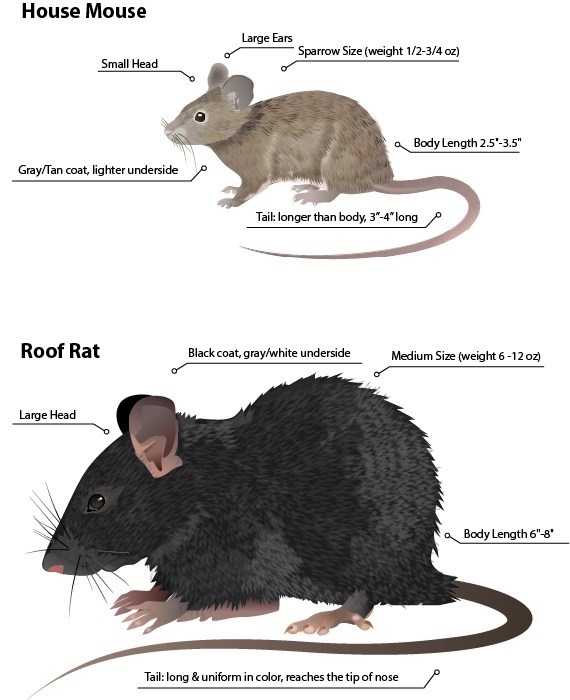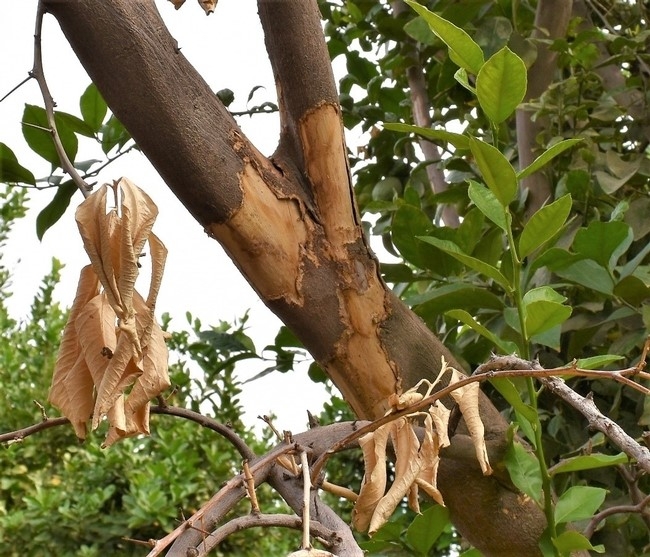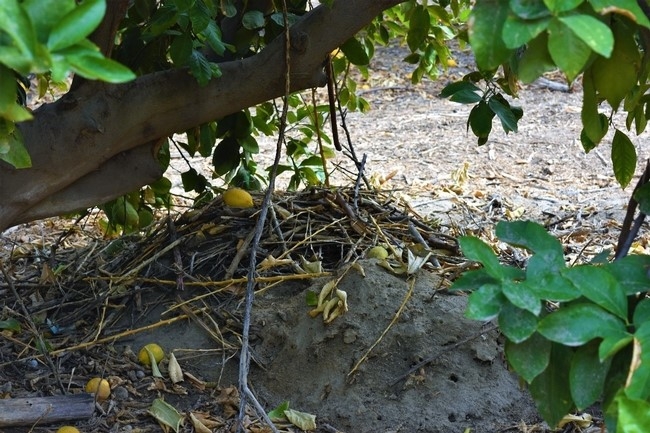
Posts Tagged: vertebrate pests
Coyote Tastes
Forrest Gump believed life was like a box of chocolates – you never know what you're going to get inside.
It's much the same for graduate student Danielle Martinez, except she isn't reaching for tasty chocolates.
She's digging into coyote stomachs.
“It's just like opening your presents at Christmas,” said Martinez, with more enthusiasm than most people would muster after sifting through the half-digested contents of more than 100 coyote stomachs. “You really do never know what you're going to find.”
Martinez, who is getting her master's degree at California State University, Fullerton, is part of a larger research effort studying urban wildlife in Southern California. Niamh Quinn, a wildlife ecologist with the University of California Division of Agriculture and Natural Resources, is leading the project.
“It's a melting pot of crazy, unanswered questions,” Quinn said. “Southern California has huge coyote issues, and people who hate coyotes and people who love coyotes and they're literally living next door to each other.”
What's missing is some of the basic science needed to help people manage and co-exist with coyotes and other urban wildlife, and that's where Quinn and her colleagues are trying to fill in the gaps.
What Do Coyotes Eat?
There are a lot of basic facts about coyote ecology scientists just don't know, and one is their diet. While there have been scat studies where people pick through poo to see what they've eaten, Quinn said those have limitations.
“It's not the identification of the parts within the scat that are inaccurate,” she explained, “it's the identification of the scat itself. If you have a coyote eating a lot of dog food, its scat is likely to be mistaken for a dog's.”
And coyotes do eat everything, as Martinez can attest.
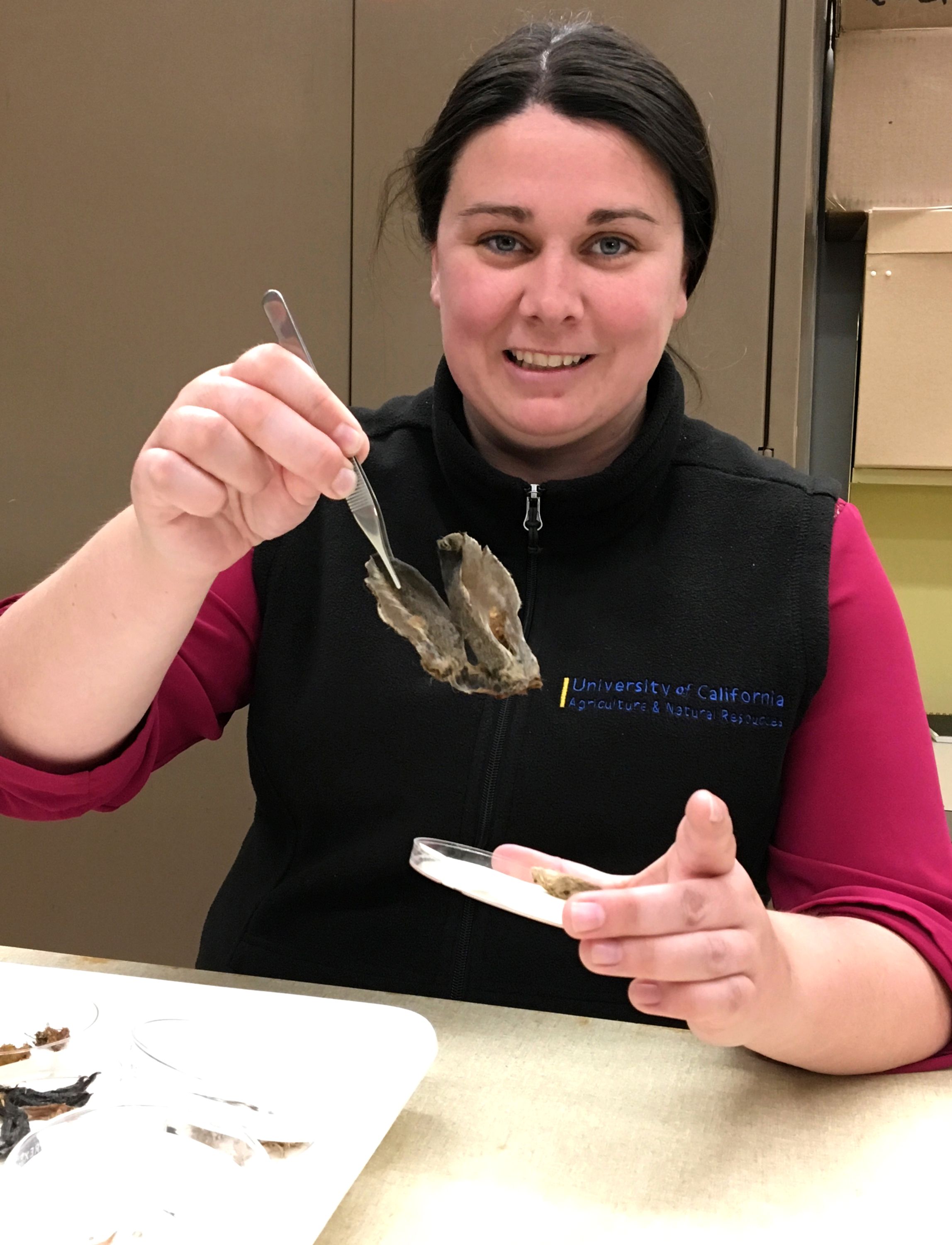
Niamh Quinn shows some of what the coyote diet study has found - in this case, rabbit ears.
“I think the strangest thing I've found was a piece of a baseball,” she said. “And I've found parts of a shoe, straw wrappers and a piece of car seat once.”
The animals' diet matters because some coyotes are being killed by rodenticides put out to kill rats, which makes sense if coyotes eat a lot of rats. But do they?
“There was zero scientific evidence that coyotes eat commensal rodents,” Quinn said, referring to the three types of mice and rats that live in close proximity to humans – Norway rats, roof rats and house mice. “And if coyotes don't eat rats, how are they getting exposed to rodenticides?”
So far, the stomach contents have shown roof rats to be about 8 percent of the Southern California coyote diet.
“Coyotes are omnivores,” Quinn said. “They eat everything. So they could be picking up things that are already dead. We don't know.”
To figure out what those things are, Quinn's team collects a lot of coyote carcasses with the help of CalTrans, local police departments and professional pest managers. Each animal is autopsied and the stomachs saved.
Martinez empties the contents of those stomachs onto a screen and washes away the goop, then picks out bones and other identifiable parts onto small trays. She's become quite expert at identifying the coyote's last meal, from cats to rabbits to gophers. Another team member blends the remainder together for later DNA analysis.
And with 100 stomachs done, Martinez only has about 300 more to go.
The Problem with Rodenticides
In 2014, the state of California restricted the use of four anticoagulant rodenticides to licensed pesticide applicators to try to reduce wildlife losses from unintentional poisoning. The state's Department of Fish and Wildlife has documented 400 cases of wildlife poisoning from rodenticides since 1994.
Quinn is trying to document how those happen.
“How does it get from the point of origin to the point of exposure?” she asked. “We know there's exposure to wildlife, but there's not a lot of science about how it happens. And if we don't know how it's broken, we can't fix it.”
So a second part of the research is to see just which critters do visit the bait stations that are commonly set out to control rats. Another member of Quinn's research team set up bait stations, loaded with bait but no poison, in the backyards of dozens of Southern California homes. Some were on the ground and some elevated on fences or trees, but all had cameras trained on them.
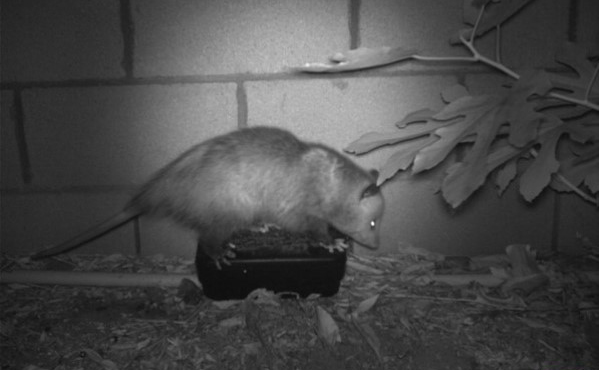
An opossum visiting a bait station.
“In the first 30 days, we got rats and a possum, a skunk, an owl a coyote and even a bobcat,” Quinn said.
Integrated pest management can help control rodent pests. Steps like clearing away ivy and woodpiles can eliminate their nesting sites. Good sanitation can take away their food supply, and sealing up holes and cracks can keep them out of homes and schools and businesses.
But because small rodents can reproduce rapidly – they do breed like rabbits after all – Quinn believes some rodenticide use will be needed to keep populations in check.
“I really don't think California without rodenticides looks very good,” she said. “But we do need better educated professionals and better educated homeowners to reduce unintentional exposure.”
She also hopes to better understand if the wildlife poisonings are having a population-level effect, and if they're having sub-lethal effects.
Help Wanted: Coyote Hazers
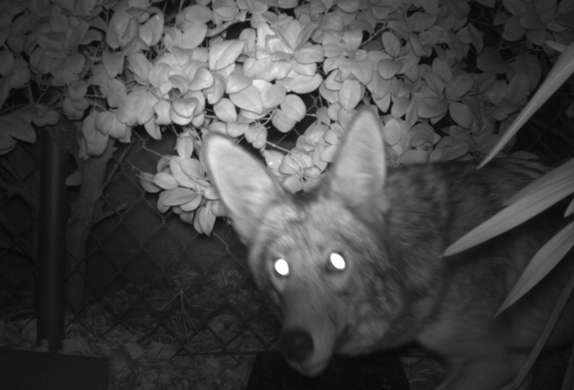
A coyote in a backyard.
A third area of research will begin this fall, and its focused on human-coyote interactions.
In this part of the study, Quinn's team are going to collar 20 coyotes in different communities and then let them settle back in to their normal routines. Using observations and GPS and accelerometer data collected by the collars, the researchers are going to get a picture of the animals' day-to-day activities and routines.
Then a dedicated group of community volunteers are going to annoy those coyotes.
“They are going to intersect with the coyote at some period in the day and start to scream at the coyote and wave their arms,” Quinn said.
Yelling and arm-waving is a form of wildlife hazing, and it's recommended now for people who encounter wild coyotes. But there's no science to show it's effective.
“Did the coyote run away with its tail between its legs, or did it approach or anything in between?” Quinn said. “With the collar data, we'll be able to see if their behavior changes. Do they change their routine so they intersect with humans less?”
That's the hope, but not the only possibility.
“They could become inured to the hazing,” Quinn said. “Or maybe won't react in the first place, and they should.”
What scientists do know is that human-coyote confrontations are increasing in Southern California, and that with the area's geography – large communities surrounded or bisected with wooded canyons – those interactions are inevitable.
“It's unrealistic to expect not to have an encounter with a coyote in Southern California,” Quinn said. “And it's a very emotional issue, and rightly so. People's pets are being eaten, and people are being bitten. We had three people bitten in a six-month period, and a bite by a wild animal should be a freak event.”
And while the researchers are hoping to find ways to modify the animals' behavior to reduce those encounters, Quinn believes humans' behaviors will change, too.
“Twenty years ago, nobody locked their doors and now everybody does,” she said. “And people used to walk their dogs off-leash and leave their pets in their backyards. But that may change.”
Furry Pests Present Unique Challenges
Coyotes and rats fall into a category known as vertebrate pests – literally pests with a backbone – and they present unique challenges for pest managers. There are no fan clubs or support groups for insect or disease pests like stink bugs or root rots, but there are for coyotes.
And wild horses. And feral cat colonies.
The Western Governors' Association, for instance, just included feral cats on its list of 50 invasive species that threaten Western ecosystems. Feral hogs, European starlings and the water-dwelling rodent nutria are also on the list.
“When you're looking at managing a species like wild horses, it's highly charged,” Quinn said. “I've had colleagues get death threats.”
And that's why there's such a need for good science. No one can develop an effective management practice if they don't know the basic ecology of the issue.
“I was hired to solve a problem, and man do we have a problem,” Quinn said. “It's like a huge mosaic puzzle, and I feel like I just have the first four pieces in the corners. Now we have to fill in everything between.”
http://westernipm.org/index.cfm/ipm-in-the-west/communities/learning-to-manage-and-live-with-coyotes-in-southern-california/

coyote
Got Voles?
Baldwin and Meinerz are UC Davis and Witmer and Werner are USDA/APHIA/Wildlife Services-National Wildlife Research Center
Voles are short, stocky rodents that often cause extensive girdling damage to a variety of tree and vine crops throughout California. Vole management is often quite challenging given how numerous they can be in a given area. In more recent years, effective management has often relied on some combination of vegetation removal, exclusion using trunk protectors, and rodenticide application. Vegetation removal is a great tool for reducing numbers in a field, but doesn't always eliminate all problems in an area. Plus, vole population size tends to ebb and flow from low to high densities; when densities are high, vegetation removal is often insufficient to reduce girdling damage.
Exclusion through the use of trunk protectors can be a good way to reduce girdling damage as well. However, trunk protectors should be buried at least 6 inches below ground to keep voles from tunneling underneath the protectors. This substantially increases the amount of labor required to protect trees and vines. Ultimately, this approach is only cost effective if high levels of damage are anticipated.
Rodenticide applications are also frequently used to knock down vole populations. However, rodenticide applications are generally not allowable within an orchard or vineyard during the growing season, thereby eliminating the use of one of the most effective vole management tools when it is most needed. Clearly there is room for a new tool to be added to the proverbial IPM toolbox when it comes to managing voles in orchard and vine crops.
Chemical repellents are one such tool that could be considered. Historically, repellents have not proven overly effective for field application against voles. However, recent laboratory testing of anthraquinone indicated that even low concentrations of this chemical were effective at reducing grain consumption by voles. Furthermore, anthraquinone has proven effective as a bird repellent. Anthraquinone is a post-ingestive product that causes animals that consume the product to become ill, thereby making it less likely that the animal will consume the product again during a subsequent feeding event. This kind of repellent is ideally suited for trunk application given that the repellent can easily be applied to the portion likely to be consumed by the vole. If effective, minimal girdling damage should be observed. A repellent application also has the added advantage in that it can easily be paired with vegetation management to hopefully further reduce girdling damage when compared to using either one of these approaches alone. Therefore, we set up a study to test the potential impact that a combination of vegetation management and anthraquinone applications would have on girdling damage by voles to young citrus trees. We also tested the longevity of anthraquinone to determine if long-term repellency following field application was likely. We tested this impact during both spring (characterized by a cool-wet weather pattern) and summer (characterized by a hot-dry weather pattern) seasons to determine if weather impacted potential girdling damage.
We found that anthraquinone was in fact highly repellent following trunk application, with a >90% reduction in girdling damage observed following application regardless of the season when it was applied. Anthraquinone exhibited substantial longevity, with no increase in girdling damage observed for the entire summer (5 weeks) and spring (6 weeks) sampling periods. This clearly indicates substantial repellency for anthraquinone applications, with repellency to last for at least two months, and likely for much longer given that we observed no upward trend at all in girdling damage at the end of our study period.
When combined with anthraquinone treatments, the removal of vegetation completely eliminated all girdling damage during summer. However, we did not observe this same collective impact during spring. That said, the inclusion of vegetation management with anthraquinone applications is likely warranted given our understanding of the need for multiple management strategies to maintain the long-term effectiveness of rodent management programs.
These results clearly indicate effective repellency of voles following anthraquinone applications, but at this time, anthraquinone is not registered for use against any mammalian species. We are hoping to gauge the interest of growers for the registration of this repellent against voles in orchard and vine crops. This is where we need your help. We have developed a very short survey (will take less than 3 minutes to complete) to gauge this interest. Please take this very quick survey to assist in this effort:
https://ucanr.edu/survey/survey.cfm?surveynumber=24480
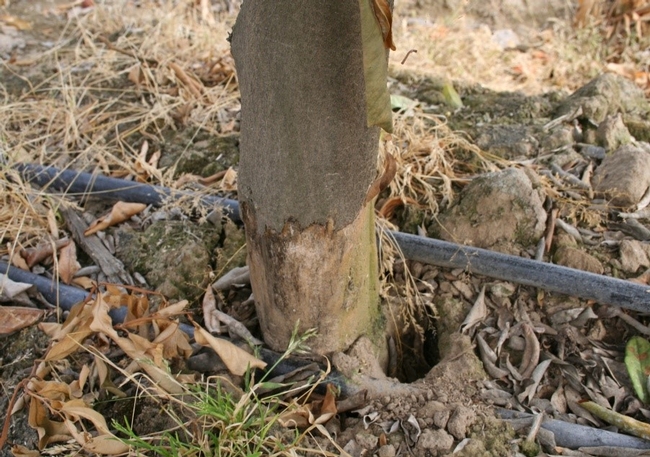
vole 7
Ah, Rats!
The roof rat (Rattus rattus, also known as a citrus rat, fruit rat, black rat, or gray rat) is an introduced species of rat native to southern Asia. It was brought to America on the first ships to reach the New World. This is the same species that carried the bubonic plague around the world and is the reservoir host for murine typhus, which is a disease that is transmitted by fleas. This primarily nocturnal vertebrate is a pest in citrus, nut orchards and other tree crops. In citrus, it builds leaf and twig nests in trees or it can nest in debris piles, thick mulch pile on the ground, or in shallow burrows under the tree. In livestock feed yards and barns, roof rats often burrow and hide under feed bunks or in the hay bales. Adult roof rats range from 12-14 inches long (30-36cm) and weigh 5-10oz. (150-250g) (UC IPM 2017). The large, sleek rat has a pointed muzzle and hairless scale-covered tail that can be longer than the body and head combined.
DAMAGE
A rats gnawing can cause some serious damage to just about anything, electrical wires, wooden structures, and they tend to not be picky about which agriculture crop to invade. Roof rats often feed on citrus, avocados, and other fruits, sometimes leaving hollow fruit skins hanging on the tree. In tree crops, they can girdle limbs or stems, leading to mortality to part or all of a tree. After harvest, they damage fruit and nuts in bins by chewing them and leaving excrement. This can cause major esthetics damage to fruit and become a food safety issue. Since rats are active throughout the year, and mostly at night, this can be a challenge to growers and can become infestation because of their quick gestational period of 3 to 4 weeks.
MANAGEMENT
Cultural Control
Because roof rats are such good climbers, swimmers, and hitchhikers it is hard to completely exclude them from your grove or orchard. Fruit trees should be isolated, not touching fences, overhead wires, or the scaffolds or branches of other trees. Roof rats will run along fence stringer boards or support poles, phone and cable TV wires, and tree branches to reach your fruit tree. Lower branches of the tree should never touch the ground. Reducing shelter and nesting opportunity sites of rats is crucial. Eliminate debris and woodpiles and store materials neatly off the ground. Thin and separate non-crop vegetation around orchards, such as weeds and remove dead wood from fruit trees, especially in citrus and avocado (UC IPM 2017). A low-hanging skirt of drooping branches give the rats additional access routes and provides them with protective cover while feeding. It's best to prune tree skirts so that the ground under them is open and visible. This lack of cover makes the rats uncomfortable and more susceptible to predators such as snakes and birds of prey.
Sanitation is also an important component to an IPM program. Use or remove all fallen fruit, do not leave any fruit behind, as the roof rat is an opportunist and will take advantage of the mess left behind.
Monitoring and Treatment Decisions
According to the UC IPM guidelines, the use of elevated bait stations containing 0.005% diphacinone*-treated oats (sold at some county agricultural commissioner's offices) is highly effective at controlling roof rats in orchards. Secure bait in a bait station before placing in trees on limbs 6 feet or more above the ground. Placing the bait in a secure bait station will prevent bait from dropping to the ground and creating a hazard for non-target species. Bait can only be applied during the non-bearing season, so growers must take a proactive approach to managing problematic rat populations (UC IPM 2017).
Trapping
Rat-sized snap or wooden box traps placed in trees are also effective, although a more time-consuming control option. Do not use glue board traps outdoors, as birds, lizards, and other non-target wildlife may be trapped. Rats are wary, tending to avoid baits and traps for at least a few days after their initial placement. Fasten traps to limbs and bait them with fruit or nut meats, but do not set the traps until after bait is readily eaten. Be aware that certain types of rat baits for use inside buildings (such as sticky traps) are not labeled for use outdoors in orchards; these are hazardous to wildlife and should not be used.
Preventative care, sanitation and scouting for rat's nests or damage is the easiest way to stop a problem before it becomes a problem. For more information regarding the roof rat, please visit the UC IPM website: http://ipm.ucanr.edu/PMG/PESTNOTES/pn74106.html.
Baiting *Be sure to identify the species of rat present to avoid killing non-target or protected species.*

